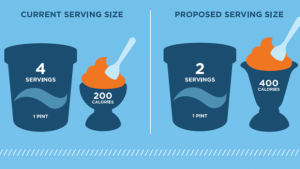
By: Dr. Keith Kantor
Questions: – As is detailed in the statement, the serving size
will now be larger and adjusted to reflect how much people
actually eat. How will this affect the way people eat, in your
opinion?
If people are used to reading nutrition labels and are not in tune with a typical perving size they may have “sticker shock” and choose to avoid foods that are high in processed sugar, or harmful trans fats more than they would with the smaller unrealistic serving size that has been on the nutrition label for years. We often think we are eating a lot less than we actually are, seeing the macro nutrients for a more typical serving size will hopefully open up the eyes of the consumer into making more healthy food choices. It is important to remember that being educated on how to read a food label is the key strategy for success and most healthy foods do not typically have a food label like poultry, steak, seafood, fresh fruits and vegetables.
– A main change is that ‘added’ sugars are now included. Please
(in a full sentence) explain what added sugars are (use some
examples, too) and share why you think this is an important
detail to include.
I believe that added sugars are the main contribution to our obesity and chronic disease epidemic. The natural occurring sugars in fruits, some dairy, and grains are not the problem. The potent syrups added for flavor are what is causing our insulin levels to spike and crash while hindering our body’s natural ability to utilize fat as a primary fuel source. This is contributing to weight gain and increased risk for chronic diseases.
– Any other insights?
Food companies may try to sneak in ingredients that are free of calories but full of chemicals, so look at the ingredients list and avoid foods that contain ingredients that you cannot pronounce.

